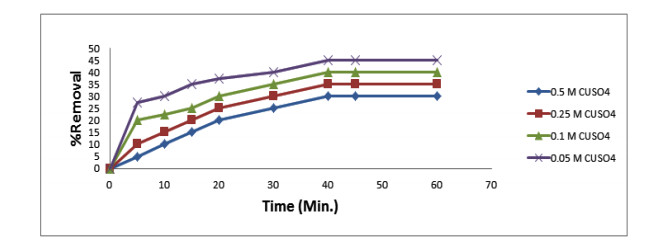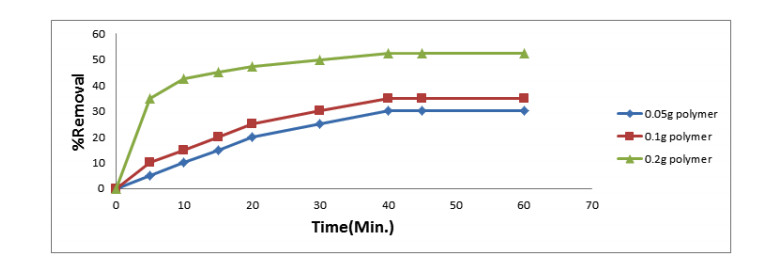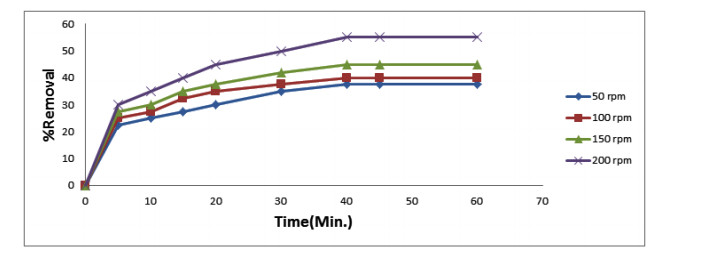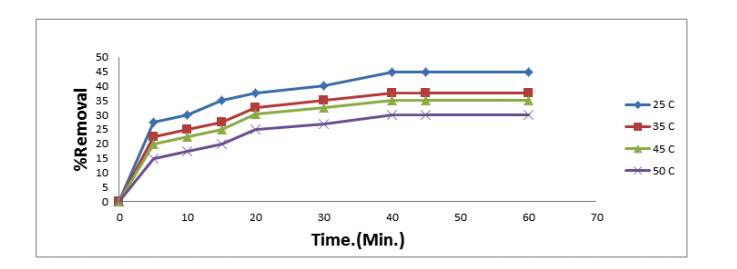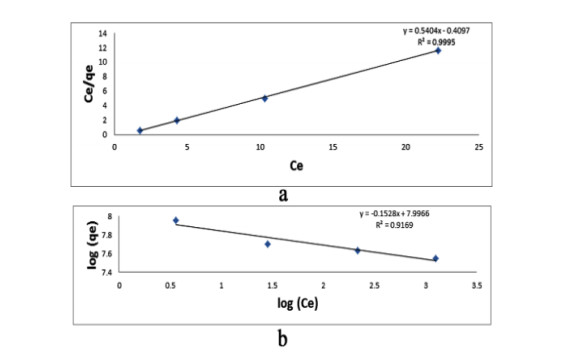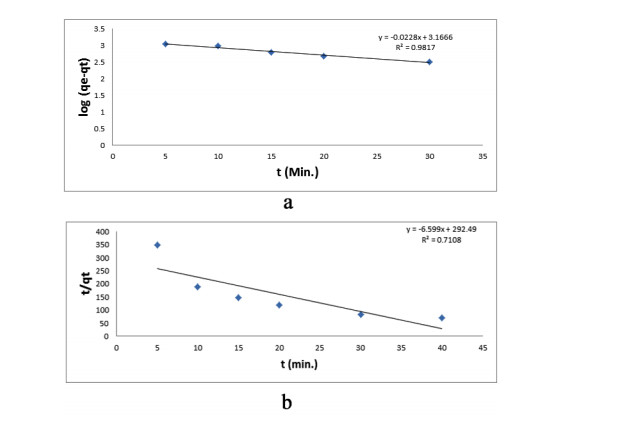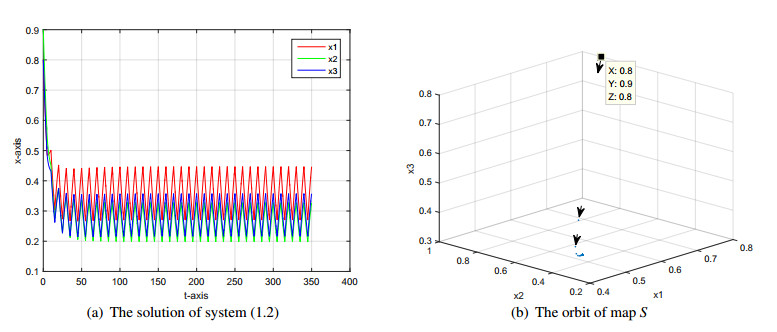1.
Introduction
Heavy metals are a major constituent in wastewater being released from glass, mining, metal plating, battery, and paints industries. Zn, Ni, Fe, Cu, Cr, and Cd are some of the most common heavy metals which contaminate effluent streams and are not biodegradable. These metals are contaminate the receiving water bodies which then lead to them being bio accumulated in the living beings including marine life, human being and flora and fauna around which then leads to health issues like cancer, kidney problems, ulcers, renal failure as well as stomach damage in rodents [1]. Problems arising from heavy metal pollution are extremely serious and require immediate action [2]. Efforts to remove metal ions have increased over time and newer and cheaper methods are being looked at. Recent efforts have focused on using cost-effective and easily available polymers to remove metal ions. Poly(methyl methacrylates) have some proper- ties such as chemical stability and mechanical strength, and they have been used for the development of application in separation techniques. Polymethyl acrylate with hydrazine chains contains carbonyl groups to pro- vide interaction between metals and polymers. In this study the complex of hydrazine and PMA were prepared, and used in batch equilibration technique for removal of Cu(Ⅱ) ions from aqueous solutions.
This study focuses on removal of Cu2+ ions using poly methyl acrylate (PMA) as an adsorbent. Parameters such as temperature, initial Cu2+ ion concentration, stirring speed, and adsorbent dose were investigated. Langmuir and Freundlich models were used to analyze the isotherm data. The pseudo-first-order and pseudo-second-order models were employed to examine the kinetic data. Scanning Electron Microscopy (SEM) was used to examine the pore structure in the synthesized and activated PMAs, and the I.R test was employed to examine the functional groups.
2.
Materials and method
2.1. Adsorbent preparation
Emulsion polymerization is the most convenient method for preparation as bulk polymerization is impractical as there is high rate and heat evolution during acrylate polymerization. Water acts as both a moderator as well as a solvent for the catalyst system. Bromate ions react with hydrogen sulfite to produce hydrogen bisulfite radicals (HSO3) and hydroxyl radicals (OH) as catalysts. Poly(methyl acrylate) is an addition polymer. The reaction involved is:
Methyl acrylate is polymerized in an aqueous emulsion with a free-radical catalyst being present. The polymer then coagulates as a white product in a concentrated solution of sodium chloride. Acetone solution is used to produce a film.
2.1.1. The procedure of preparation of hydrazide PMA (HPMA)
A solution of poly-methyl acrylate (2 gm) in di-methyl sulfoxide (60 mL) was treated with 99% hydrazine hydrate (20 mL) and boiled under reflux with constant stirring on a hot plate for 20 h. The polymer was added with constant stirring to a large excess volume of methanol (400 mL). The precipitated poly methyl acrylic acid hydrazide polymer was filtered and dried in a vacuum pump. The obtained polymer was purified by dissolution in lest amount of water, then reprecipitated by absolute methanol. The pure polymer was then filtered dried in a vacuum desiccator for ten days over concentrated sulfuric acid.
2.1.2. Characterization of adsorbent
JSM-5600 model of SEM was employed to analyze the morphological features of the synthesized and activated PMA.
2.1.3. Adsorption procedure
10 mL (0.05 M, 0.1 M, 0.25 M, 0.5 M) of CuSO4 was measured and added to 100 mL dry and clean bottles which was followed by addition of the modified PMA (0.05, 0.1, 0.2 g). The conical flask was then placed on a rotary shaker and shaken at various speeds (50, 100, 150, 200 rpm) at different temperatures (25, 35, 45, 50 ℃) for 60 min to attain equilibrium. Whatman filter paper was employed to filter the suspension, followed by the determination of the metal ion concentration in the filtrate. Eq 1 was used to calculate the quantity of ions adsorbed:
The adsorption capacity was determined using the following mass balance equation (Eq 2) [3].
where Co and Ct refer to the initial and final concentrations (in mg/L) of the metal ions in wastewater before and after adsorption, for time t, respectively. Ce is the concentration of the cupric ion in CuSO4 (mg/L) when equilibrium was attained. V is the volume of CuSO4 (mL). And W is the mass (g) of the adsorbent used. The below Eq 3 was used to determine the percentage of metal ions removed:
where (%R) denotes the ratio between the difference in metal concentrations before and after adsorption [4].
2.1.4. Effect of initial metal concentration
Various concentrations of CuSO4 (0.05, 0.25, 0.5, 0.1 M) solution was mixed with 0.1 g of the modified PMA in conical flasks which were then sealed and agitated using a shaker for 1 h at 150 rpm, 25 ℃ and a pH of 4.6. The contents were then filtered out and analyzed.
2.1.5. Effect of adsorbent dosage
Different adsorbent doses (0.05–0.1–0.2 g) were added to 10 mL CuSO4 solution in a conical flask which was then sealed and agitated in a shaker for 1 h at an rpm of 150 at 25 ℃. The flask contents were filtered and analyzed [5].
2.1.6. Effect of shaking speed
Different shaking speeds were considered to analyze their effects when 1 g of the adsorbent was added to 10 mL CuSO4 and agitated at different speeds (50, 100, 150, 200 rpm) for 1 h at 25 ℃. The contents were filtered and analyzed [6].
2.1.7. Effect of temperature
This was studied by agitating 0.1 g of adsorbent in 10 mL CuSO4 solution for 1 h at 150 rpm and different temperatures (25, 35, 45, 50 ℃). Contents were filtered and analyzed.
2.1.8. Adsorption isotherm studies
The usual method of carrying out isotherm studies for solid–liquid interfaces involves varying the CuSO4 solution concentration while keeping the other parameters like volume, size, pH of solution, rpm and temperature constant. Performance of this adsorbent was determined by the uptake. Langmuir, and Freundlich isotherm models were used to carry out these adsorption isotherm studies. The correlation coefficient, R2 value, was used to investigate and compare the applicability of the above mentioned isotherm models.
Langmuir isotherm: Eq 4 has been used to compute the Langmuir isotherm [7,8]:
Here, Q0 is the maximum quantity of Cu2+ ions that can be taken up as “per unit mass polymer” (mg/g) The Langmuir constant, b, is associated with energy of sorption and expressed as b.
Freundlich isotherm: For non-ideal adsorption with heterogeneous desorption Freundlich isotherm is often used. Eq 5 expresses the formula [7,9]:
The above equation can be modified to a linear form by using logarithm on both sides as:
KF, Freundlich constant, and 1/n both describe adsorption capacity and adsorption intensity. Plotting log of qe vs logCe from Eq 6 will give the values of KF and n from the slope and intercept of the graph. The feasibility of the adsorption can be judged from the magnitude of 1/n exponent. When the magnitude is less than 1, adsorption is inadequate; 1-2 means that there is moderate adsorption and 2-10 stands for god adsorption [10].
Kinetic Analysis: The adsorption kinetics was studied by analyzing the Cu(Ⅱ) uptake from CuSO4 at different intervals of time during adsorption. For Cu(Ⅱ) adsorption by activated PMA kinetic study, pseudo-first and pseudo-second order reaction models were applied. The appropriate model for the adsorption kinetics can be found out when linearity of both models is checked via graphs. Eqs 7 and 8 are used to describe pseudo-first-order systems:
qe and qt respectively (mg/g) describe the sorption capacities at equilibrium and at time t. k describes the pseudo-first order rate constant (L min-1). The equation in integrated with the application of the following boundary conditions, from t = 0 to t = t and qt = 0 to qt = qt, to yield [11]:
The following equation is used for pseudo-second order model Eq 9 [12]:
qe and qt denote adsorption capacities during equilibrium and at a fixed time t (mg/g) and k (g/mg min) describes the rate constant in a pseudo-second order reaction.
3.
Results and discussion
3.1. Morphology study of poly-methyl acrylate and its hydrazide derivative (SEM)
Scanning Electron Microscopy (SEM) images for a selected sample of poly-methyl acrylate and its hydrazide derivative were taken in the faculty of science, Alexandria University. The purpose of this study is to understand the microstructure relationship of the sample matrix. SEM serves as a qualitative or semi-quantitative technique which is used for studying morphology and observed the pore structure of PMA. The pores present in PMA act as active sites and the adsorption takes place in those sites. Figure 1a presents images of PMA in which active sites are not visible. The modified PMA was produced by dissolving it in dimethyl sulfoxide (DMSO) and became chemically active. Figure 1b depicts the image of chemically active hydrazide derivative of PMA where active sites are clearly visible (see Figure 1).
3.1.1. IR Analysis
The IR spectra of the poly-methyl acrylate and its hydrazide derivative, which were collected and analyzed by Perkin-Elmer BX-II FT-IR spectrometer are shown in Figure 2 (see Figure 2).
The spectra of poly-methyl acrylate showed the peak of carbonyl stretching at 1716 cm-1 while the absorptions at 2854 cm-1 and 2927 cm-1 are characteristics of CH2 groups in alkyl chains. The spectra of acid hydrazide showed a series of bands characteristic to the hydrazide (–CO–NH–NH2) residue. A number of bands observed due to (NH2) symmetric stretching vibration and (NH2) asymmetric stretching vibration in the range of 3400–3100 cm-1. The peak at 3200 cm-1 attributes to (NH) of the secondary NH group. Similarly, the hydrazide group of amides showed the spectra of acid hydrazide, and acid hydrazone also showed the IR bands for both in-plane deformation and out-of-plane deformation of C = O at 670 cm-1 And 510 cm-1, respectively.
3.1.2. Effect of initial metal ion concentration on adsorption of Cu2+
Figure 3 show how the initial concentration of Cu(Ⅱ) ions affect the residual concentration and percentage removal, respectively. Our findings showed that the increase in the initial concentration of Cu(Ⅱ) led to an increase in the residual concentration and a decrease in percentage removal. Also, the number of sites available for adsorption decreased with the increase in concentration. This can be explained by the competitive diffusion process of Cu(Ⅱ) ions through the micro-channel and pores in PMA When metal ions are adsorbed, the inlet of channel on the surface gets locked. This does not allow the metal ions to pass deeply inside the PMA since the adsorption process occurs only on the surfaces. Previous studies have also showed similar results for natural zeolite and olive cake [13,14]. They found that the maximum adsorption of Cu2+ ions achieved at 30 ℃ with a particle size of 45 mm using natural zeolite [15]. In another study, the maximum removal of Cu2+ occurred at 28 ℃ with an initial pH of the solution of 4.5 by using olive cake as absorbent [15]. Besides, Karthikeyan et al. did the experiment of adsorbing Fe3+ ions using chitin and Rao et al. used carbon absorbents to remove the color of wastewater in the dye manufacturing industry [16,17] (see Figure 3).
3.1.3. Effect of adsorbent dosage on adsorption of Cu2+
The effluences of PMA masses on percentage removal of Cu(Ⅱ) are shown in Figure 4. It can be observed that the PMA amount increases with the decrease in residual concentration and simultaneously the percentage removal of Cu (Ⅱ) increases. The higher concentration of PMA signifies that a larger surface area is available, forming a large number of adsorption sites which in turn increases the capacity of adsorption [18] (see Figure 4).
3.1.4. Effect of shaking speed (rpm) on adsorption of Cu2+
Shaking speed is a crucial parameter on the adsorption. Figure 5 show how shaking speed affects the residual concentration and percentage removal of Cu(Ⅱ). An increase in the shaking speed decreased the residual concentration and increased the percentage removal. Increased shaking speed increased the stirring rate, which further increased the percentage removal of metal ions due to the diffusion of the ions to the adsorbent’s surface. This also reduced the film boundary layer around the adsorbent [19]. In fact, the efficiency increased because of increased turbulence and decreased external mass transfer resistance thickness around the adsorbent particles [20] (see Figure 5).
3.1.5. Effect of temperature on adsorption of Cu2+
Figure 6 denote the temperature effects on the residual concentration and percentage removal of Cu(Ⅱ), respectively. Our findings showed that the increase in temperature decreased the percentage removal decreases due to decreased adsorption or the weak attractive forces between the metal ions and adsorbent surface. The metal ions have an increased tendency to escape from the surface of the biomass in the solution phase at high temperatures. This results in decreased thickness of the boundary layer and decreased adsorption (Aksu and Kutsal, 1991). In addition, the increased temperature increases the loading capacity and decreases the initial adsorbate concentration. This indicates the significance of the rate of desorption compared to the rate of adsorption; thus, this implies that the nature of the reaction process is exothermic [21] (see Figure 6).
3.1.6. Adsorption isotherm studies
Langmuir isotherm: The Langmuir adsorption is commonly described as the equilibrium between an adsorbate and adsorbent system in which the adsorbate behaves like an ideal gas at the isothermal condition. A pressure relationship called Langmuir Isotherm describes the release of adsorbed gas. The isothermal Langmuir adsorption assumes the gas attaches to the surface and covers as a single layer. The results obtained from the Langmuir model for the removal of Cu2+ by using poly methyl acrylate as absorbent are shown in Figure 7a. The experiments showed strong positive evidence on the adsorption of Cu2+ onto poly methyl acrylate by following the Langmuir isotherm. The high correlation coefficient, R2 > 0.99 proved the effectiveness and applicability of the linear forms of Langmuir models, indicating its feasibility in the sorption system. Meanwhile, the results obtained by using the Freundlich isotherm in which R2 = 0.9169 are shown in Figure 7b. By comparing the above two models, we conclude that Langmuir isotherm is the best model to fit the data as R2 value is higher here (see Figure 7).
3.1.7. Kinetic models applied to the adsorption of Cu2+ onto PMA
Adsorption kinetics must be considered for the accurate design of the adsorption method [22]. It is used in calculate adsorption mechanism, adsorption features and the interaction between adsorbent and adsorbate. Both pseudo-first-order and pseudo-second-order equations have been applied here to determine the adsorption mechanism based on the present experimental data [11,23]. Figure 8a presents the plot of pseudo-first-order kinetics for the adsorption of Cu2+ on PMA in which qe and k values were calculated from the slope. In the plot, the intercept of the line was used to calculate the correlation coefficient, R2. Figure 8b depicts the plot of pseudo-second-order kinetics for the adsorption of Cu2+ on PMA. Similarly, the values of qt and k2 were calculated from the slope and obtained R2 from the intercept of the line. Comparing the two plots presented in Figures 8, it is seen that R2 values is much higher in pseudo-first-order model than in pseudo-second-order model, which confirms that pseudo-first-order model is the best model to fit the data (see Figure 8).
4.
Conclusions
In conclusion, the PMA can be prepared and treated easily. PMA has been proven to be effective in cupric ion (Cu2+) removal from effluent system. The correlation coefficient, R2, value suggests that the adsorption model by Langmuir correctly describes the PMA adsorption system at equilibrium. Pseudo-first-order model is the best model which represents the behavior of adsorption process with time and to identify the adsorption rate at room temperature. Further studies may consider the following recommendations: (a) effect of using the lowest available concentration; (b) decreasing the temperature during the process of adsorption; (c) increasing higher speed for agitation (rpm); (d) increasing the quantity of the polymer being used, i.e., PMA.
Conflicts of interests
The authors declare that there is no conflict of interest regarding the publication of this paper.











 DownLoad:
DownLoad:

